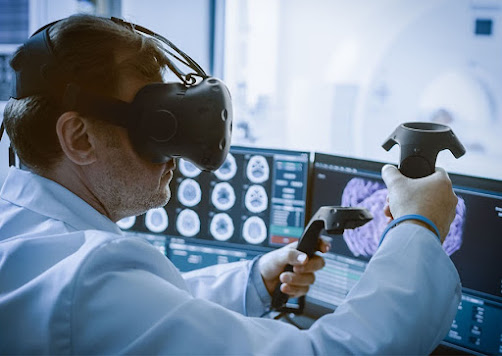MUSCULOSKELETAL (MSK) IMAGING
Musculoskeletal Disorder (MSD), includes diseases of muscles, bones, joints, and the soft tissues around it. Pain and injuries are the most common complaints of the patients reaching out to a primary care physician, and with increasing age, the risk of developing MSD increases. As per the data from the World Health Organization (WHO), disability from MSDs is second largest in number, across the globe. The symptoms of various MSDs vary and it may affect the daily activity so much so that the quality of life may get compromised. It’s very important to get muscle or bone disorders diagnosed and treated in time, to keep oneself healthy. This makes MSK, the most sought after system as far as, an accurate clinical diagnosis is concerned.
Various modalities are used to reach an optimum conclusion , before starting a confirmed treatment in MSDs. These are X-Rays, ultrasound, CT scans, and magnetic resonance imaging (MRIs). Each modality offers its benefits and limitations, that also, make them specific tools for diagnosis in specific health conditions.
X-rays are often performed in an emergency situation such as a traumatic fall or an accident leading to fractures. Limited information can also be received in conditions like arthritis, infections, and osteoporosis while using X-rays.
Ultrasound is used to take pictures of the anatomy and function of soft tissue around bones and joints using sound waves. Ultrasound imaging is typically used to diagnose tendon tears, muscle tears, fluid collections, ligament sprains or tears, inflammation or fluid within the bursae and joints, early changes of rheumatoid arthritis, nerve entrapments such as carpal tunnel syndrome.
CT scan is a procedure, which can produce detailed pictures of the muscles, bones, joints, and the soft tissues around. This painless and non-invasive procedure helps doctors making a diagnosis in cases of, Osteoporosis, Osteopenia, Paget’s disease, Bone cancer, Bone infections, Muscular dystrophy, Muscle sprains or strains, Tendinitis, etc.
● MRI (Magnetic Resonance Imaging)
MRI is the most sensitive non-invasive imaging tool for a broad range of diseases affecting the musculoskeletal system. MRI’s edge over the other imaging tools rests primarily in obtaining better image resolution of body tissues and pathologic processes. Thus, high-resolution images of MRI, bring the excellent and discrete view of organs and diseases.
MRI uses a strong magnetic field, which is directly related to image resolution obtained. The field strength is typically between 1.5 T and 3 T, but may be lower in an open MRI scanner.
MRI is highly sensitive and specific for osseous and articular hip injuries, as well as soft tissues injuries of the hip and pelvis, and is the recommended imaging modality in most cases after a radiograph is negative.
Indications of MRI
Diagnostic imaging can be a valuable tool when used in conjunction with a thorough history and physical examination for establishing a diagnosis and treatment plan. Radiographs are the initial imaging modality in most cases of musculoskeletal injury or pain but MRI is most important and recommended imaging in following cases.
1.Bones
In the setting of trauma, MRI is indicated for the evaluation of those injuries of the metaphysis and epiphysis, where Xrays are found inconclusive/ undetected injuries, and to assess fracture union.
In knee injuries, When there is clinical suspicion for meniscal or ligamentous injury, MRI is the best modality to be used to detect such injuries.
MRI is useful to detect and stage acute and chronic osteomyelitis,primary bone tumors, both benign and cancerous, and undetected spread of secondaries to the bones.
2. Soft Tissues
MRI is indicated for the evaluation of,
Muscle and tendon and ligament tears/injuries , hematomas, nerve entrapment syndromes, tenosynovitis, bursitis, infections, abscesses and myositis Rotator cuff injury (tendinopathy or tear), Avascular necrosis, Biceps tendon injury (tendinopathy/tear).
It is helpful in detection, and staging of benign and malignant soft tissue tumours.
3. Joints/spinal
MRI is indicated for the diagnosis of hurt/ injuries to joints due to trauma, certain articular cartilage injuries, and inflammatory changes in the joints due to overuse, posttraumatic osteonecrosis and degenerative joint disease, joint infections, rheumatoid and the seronegative arthritis.
During traumatic spine surgeries, MRI is specifically recommended when there is a doubt for the injury to the spinal cord, nerve roots, and/or soft tissue, which are not well visualized on CT. MRI is also indicated in the cases of joint pain with clicking sounds, abnormal disc displacement, marrow abnormalities, osteonecrosis of the mandibular condyle and so on and so forth.
The list is endless……..and exhausting. Musculoskeletal health is very important to keep us going in our routine life, and in today’s day n time when the clinicians are overloaded and patients are becoming more impatient, there is a dire need for a diagnostic tool with an accurate, and in time reporting to have best results in day-to-day practice. MRI is the most recommended imaging tool in this scenario….
How do We Help….
At Cloudex, we have an entire team of certified Radiologists, Physicians, Subspeciality experts, and trained technologists, who work in association with Primary care Physicians, Surgeons, orthopedic surgeons, and Radiation and Medical Oncologists to provide the best MRI reporting.
Our Fellowship Trained Experts from North America, provide structured reports based on the need and urgency. They are always available on call (24x7x365), for any discussion that can help managing any case, right from the simple fracture to an occult bone mass.
Urgent reporting within few hours, with upfront information provided by the team to the referring doctor for various critical cases, has rewarded us with better patient and doctor satisfaction and immense faith of fellow clinicians.
Take Home Message from Cloudex……
We understand that the recipe to successful treatment results, is totally dependent upon the following ingredients:
The precision,
Reliability and,
In time access to an accurate, easy to understand imaging report,
At Cloudex, we ensure to help you have, that winning edge.



Comments
Post a Comment